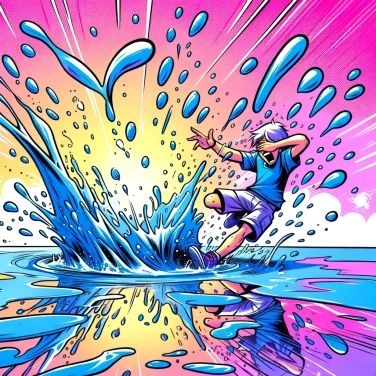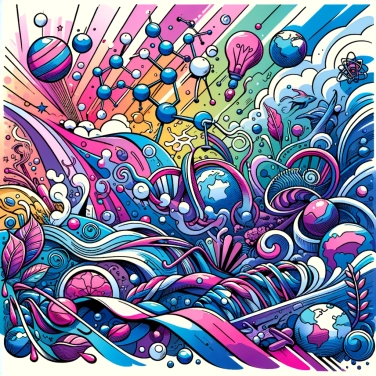In detail, for those interested!
Molecular polarity of water
Water is a molecule composed of two hydrogen atoms and one oxygen atom, linked by covalent bonds. The water molecule has a bent shape, with the hydrogen atoms forming an angle of approximately 104.5 degrees with respect to the oxygen atom.
The uniqueness of the water molecule lies in its polarity. Due to the higher electronegativity of oxygen compared to hydrogen, electrons spend more time on the oxygen side, creating a partial negative charge (δ-) near the oxygen and a partial positive charge (δ+) near the hydrogen atoms.
This difference in charges creates an electric dipole within the water molecule, giving it polarity. In other words, water is a polar molecule, meaning it has a positive region and a negative region.
Because of this polarity, water is a very effective solvent, capable of dissolving a wide range of substances. Water molecules can surround and dissociate ions and polar molecules, thereby facilitating chemical reactions and biological processes.
The polarity of water is also responsible for its unique physical properties, such as its ability to form hydrogen bonds. These intermolecular bonds contribute to the cohesion of water, its high surface tension, and its ability to adapt to different temperatures.
In summary, the molecular polarity of water, due to the difference in electronegativity between oxygen and hydrogen, is responsible for many essential properties and behaviors of this vital substance for life on Earth.
Interaction between water and surfaces
The interaction between water and surfaces is an important phenomenon to understand why water wets. When water comes into contact with a surface, several forces come into play. The first is adhesion, which occurs when water molecules interact with surface molecules. These interactions can be stronger or weaker depending on the chemical nature of the surface.
Next, there is cohesion, which is the force of attraction between water molecules themselves. When water is in contact with a surface, the forces of cohesion and adhesion interact, which can result in a change in the shape of the water's surface. For example, when water is poured on a hydrophobic surface, like Teflon, it forms compact droplets due to low adhesion to the surface.
On the other hand, on a hydrophilic surface, water spreads and forms a thin layer due to strong adhesion to the surface. This interaction between water and surfaces also depends on the surface tension of water, which influences water's ability to wet a surface.
In conclusion, the interaction between water and surfaces is a complex process influenced by adhesion, cohesion, and the chemical nature of the surface. These interactions are essential to understand why water wets and how it interacts with different types of surfaces.
Surface tension of water
Water has a high surface tension due to its molecular properties. This property is linked to the attraction of water molecules at the surface. Inside the water, molecules are attracted in all directions by other water molecules, creating an equilibrium in all directions. However, at the surface of the water, molecules are only attracted downward and sideways, creating tension at the surface of the water. This tension is responsible for observable phenomena such as the formation of droplets and the ability of insects to walk on water without sinking. The surface tension of water is an important property in many fields such as biology, chemistry, and physics.
![Explain why some countries change time zones?]()
![Explain why chilling the butter before working it into puff pastry dough ensures a better texture.]()
![Explain why Alexander the Great refused to wear shoes.]()
![Explain why Alexander the Great always wore an impressive helmet.]()





















